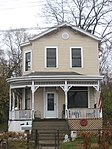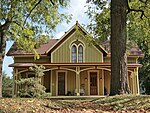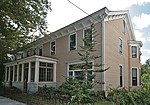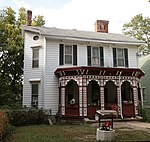East End Park (Cincinnati)
1891 establishments in OhioBaseball venues in OhioDefunct baseball venues in the United StatesSports venues completed in 1891Sports venues in Cincinnati

East End Park was a former major league baseball park located in the East End neighborhood of Cincinnati in the United States. The ballpark, which is also known to baseball historians as Pendleton Park, was home to the Cincinnati Reds of the American Association (now more commonly known as the Cincinnati Kelly's Killers) during the 1891 baseball season. The club was led by the flamboyant star, Mike "King" Kelly.
Excerpt from the Wikipedia article East End Park (Cincinnati) (License: CC BY-SA 3.0, Authors, Images).East End Park (Cincinnati)
Watson Street, Cincinnati East End
Geographical coordinates (GPS) Address Nearby Places Show on map
Geographical coordinates (GPS)
| Latitude | Longitude |
|---|---|
| N 39.117777777778 ° | E -84.446388888889 ° |
Address
Paul Kramer Field
Watson Street
45226 Cincinnati, East End
Ohio, United States
Open on Google Maps











